August 8 – Jewish Quarter Walking Tour
The next day, Priscilla, Pam and I had plans to go on the Jewish Quarter Walking Tour while Miles and Rod played tennis
. Bill would be going with Pavel, who had, generously, offered his assistance, to a little village, about two and a half hours from Prague, to try and locate some of his relatives, on his mother's side.
So, off we all went. We met our guide at the designated spot to begin the walking tour. We could tell from the first words out of her mouth that she left a lot to be desired which was disappointing, particularly, since this was the only tour that we had paid for upfront. She did give us some history, in a somewhat monotone voice, and guided us through the significant historical buildings.
A little history….Jews are believed to have settled in Prague as early as the 10th century. The Jewish Quarter in Prague, known as Josefov or the Prague Jewish Ghetto, dates from the 13th century, when Jewish people were ordered to vacate their disparate homes and settle in one area. Over the centuries, the Ghetto became more and more crowded with the arrival of Jews who had been expelled from Moravia, Germany Austria and Spain. In addition to the poor conditions, inhabitants of the Prague Jewish Ghetto were forced to endure many structural changes with the latest occurring between 1893 and 1913, when most of the buildings were demolished, and the layout of many streets remodeled.
Fortunately, most of the significant historical buildings were saved from destruction, and today they remain as a testimony to the history of the Jews in Prague and form the best preserved complex of historical Jewish monuments in the whole of Europe
. The complex consisting of six synagogues, the Old Jewish Town Hall and the old cemetery, form, with the exception of the Old-New Synagogue, what is called the Jewish Museum in Prague. These historic monuments even survived the Nazi occupation in the 20th century. It is said that Adolf Hitler himself decided to preserve the Jewish Quarter as a "Museum of an Extinct Race."
On the tour, we passed by all six of the synagogues and learned that the Old-New Synagogue was built in the 13th century in early Gothic Style and is the oldest preserved synagogue in Central Europe. Today, it’s the main house of prayer for the Jewish community.
We spent quite a bit of time in the 16thcentury Pinkas Synagogue. In 1950-1954 the Synagogue was turned into a memorial to the nearly 80,000 Jewish victims of the Holocaust from Bohemia and Moravia and is one of the earliest memorials of its kind in Europe with the names of the victims beautifully inscribed on the walls of the synagogue
. Witnessing these names was so impactful and really brought home how truly horrific the Holocaust was.
The permanent exhibition at the Pinkas Synagogue is a series of emotionally powerful drawings that focus on the fate of Jewish children who were incarcerated in the Terezin ghetto during the Second World War. They bear testimony to the persecution of Jews during the Nazi occupation of the Bohemian lands in 1939-1945 and document the transports to Terezin and daily life in the ghetto, as well as the dreams of returning home and of life in the Jewish homeland of Palestine. The vast majority of these children perished in the gas chambers of Auschiwitz-Birkenau.
Next, we spent time in the Maisel Synagogue built from 1590-1592. During the Nazi occupation of the Czech lands, properties of the Czech Jewish communities were stored in the Maisel Synagogue. Today it is part of the Jewish Museum and has beautiful and interesting exhibits of Jewish history in the Czech lands from the 9th century until the present
.
Finally, we wandered through the pathways of the Old Jewish Cemetery. It’s among the oldest surviving Jewish burial grounds in the world and one of the most important Jewish historical monuments in Prague. The Cemetery was founded in the first half of the 15th century with the earliest tombstone dating back to 1439. The last burial took place 348 years later and, although the cemetery was expanded several times over the centuries, it was still not big enough to meet the needs of the Jewish Town. As space was scarce, bodies were buried on top of each other, with graves layered up to 10 deep. In all, there are about 12,000 tombstones in the cemetery.
At the end of the tour, we stopped at the statue commemorating Franz Kafka. Kafka spent most of his life in the historic Jewish Quarter and this little square is what the city's famous native writer probably saw each time he looked out of his window. The tall black sculpture, that represents a headless male figure in a suit with a somewhat smaller figure of Kafka sitting on his shoulders, was authored by sculptor, Jaroslav Rona, who found his inspiration in Kafka's work. The image of a young man riding on another one's shoulders through the night streets of Prague appears in Franz Kafka's early short story, "Description of a Struggle".
Bill returned from his ancestry search shortly after we got back to the flat and told us that he and Pavel had been successful in finding one of his 2nd cousins in the little village of Drazovice So, at least, all their research had not been in vain.
That night, we all went to a wonderful concert in one of the churches in the Old Town and then had another fabulous meal in a little Italian restaurant near the flat.
This had been quite a full day for all of us so we headed off to bed as we were having an early start in the morning on an excursion to Cesky Krumlov.
JEWISH QUARTER WALKING TOUR
Monday, August 08, 2016
 Prague, Praha, Czech Republic
Prague, Praha, Czech Republic
Other Entries
-
1Layover in Atlanta en route to Baltimore
Jul 2415 days prior Baltimore, United Statesphoto_camera2videocam 0comment 16
Baltimore, United Statesphoto_camera2videocam 0comment 16 -
2OUR BIG TRIP REALLY BEGINS!
Jul 2712 days prior Baltimore, United Statesphoto_camera9videocam 0comment 6
Baltimore, United Statesphoto_camera9videocam 0comment 6 -
3FIRST FEW DAYS IN COPENHAGEN
Jul 2811 days prior Copenhagen, Denmarkphoto_camera18videocam 0comment 6
Copenhagen, Denmarkphoto_camera18videocam 0comment 6 -
4OUR ADVENTURE IN COPENHAGEN CONTINUES
Jul 309 days prior Copenhagen, Denmarkphoto_camera18videocam 0comment 4
Copenhagen, Denmarkphoto_camera18videocam 0comment 4 -
5ANOTHER PACKED FULL DAY
Jul 318 days prior Copenhagen, Denmarkphoto_camera32videocam 0comment 5
Copenhagen, Denmarkphoto_camera32videocam 0comment 5 -
6OUR SMORREBROD COOKING LESSON
Aug 017 days prior Copenhagen, Denmarkphoto_camera12videocam 0comment 6
Copenhagen, Denmarkphoto_camera12videocam 0comment 6 -
7HAMLET'S CASTLE
Aug 026 days prior Copenhagen, Denmarkphoto_camera33videocam 0comment 6
Copenhagen, Denmarkphoto_camera33videocam 0comment 6 -
8FINAL DAY IN COPENHAGEN
Aug 035 days prior Copenhagen, Denmarkphoto_camera41videocam 0comment 8
Copenhagen, Denmarkphoto_camera41videocam 0comment 8 -
9OUR ACCOMODATIONS WEREN'T QUITE WHAT WE EXPECTED
Aug 044 days prior Prague, Czech Republicphoto_camera19videocam 0comment 4
Prague, Czech Republicphoto_camera19videocam 0comment 4 -
10MORE WALKING TOURS & EXPLORING
Aug 053 days prior Prague, Czech Republicphoto_camera19videocam 0comment 3
Prague, Czech Republicphoto_camera19videocam 0comment 3 -
11WALKING TOUR OF PRAGUE CASTLE
Aug 062 days prior Prague, Czech Republicphoto_camera22videocam 0comment 3
Prague, Czech Republicphoto_camera22videocam 0comment 3 -
12CRAFTS FAIR AND MUCHA MUSEUM
Aug 071 day prior Prague, Czech Republicphoto_camera27videocam 0comment 6
Prague, Czech Republicphoto_camera27videocam 0comment 6 -
13JEWISH QUARTER WALKING TOUR
Aug 08 Prague, Czech Republicphoto_camera30videocam 0comment 2
Prague, Czech Republicphoto_camera30videocam 0comment 2 -
14EXCURSION TO CESKY KRUMLOV
Aug 091 day later Prague, Czech Republicphoto_camera21videocam 0comment 2
Prague, Czech Republicphoto_camera21videocam 0comment 2 -
15CESKY KRUMLOV CASTLE & LAST SUPPER IN PRAGUE
Aug 091 day later Prague, Czech Republicphoto_camera22videocam 0comment 9
Prague, Czech Republicphoto_camera22videocam 0comment 9 -
16A FEW FINAL PHOTOS
Aug 102 days later Prague, Czech Republicphoto_camera19videocam 0comment 6
Prague, Czech Republicphoto_camera19videocam 0comment 6 -
17WE WELCOMED THE CHANGE OF PACE
Aug 102 days later Horní Polubný, Czech Republicphoto_camera32videocam 0comment 4
Horní Polubný, Czech Republicphoto_camera32videocam 0comment 4 -
18THE GLASS FACTORY AND CROSSING INTO POLAND
Aug 124 days later Horní Polubný, Czech Republicphoto_camera17videocam 0comment 0
Horní Polubný, Czech Republicphoto_camera17videocam 0comment 0 -
19POLAND AND BACK...FOR REAL
Aug 135 days later Karpacz, Polandphoto_camera23videocam 0comment 7
Karpacz, Polandphoto_camera23videocam 0comment 7 -
20OFF ON ANOTHER DAY EXCURSION TO LIBEREC
Aug 146 days later Liberec, Czech Republicphoto_camera33videocam 0comment 11
Liberec, Czech Republicphoto_camera33videocam 0comment 11 -
21VISITING THE ROCK CASTLES
Aug 157 days later Malá Skála, Czech Republicphoto_camera40videocam 0comment 3
Malá Skála, Czech Republicphoto_camera40videocam 0comment 3 -
22GOODBYE TO HORNI POLUBNY AND OFF TO VENICE
Aug 168 days later Prague, Czech Republicphoto_camera27videocam 0comment 0
Prague, Czech Republicphoto_camera27videocam 0comment 0 -
23FINALLY IN A NEW COUNTRY
Aug 1810 days later Vienna, Austriaphoto_camera24videocam 0comment 4
Vienna, Austriaphoto_camera24videocam 0comment 4 -
24ALBERTINA, SCHONBRUNN AND THE FABULOUS ZOO
Aug 1911 days later Vienna, Austriaphoto_camera29videocam 1comment 3
Vienna, Austriaphoto_camera29videocam 1comment 3 -
25SO MUCH TO SEE AND DO....AND IT'S PAM'S BIRTHDAY
Aug 2012 days later Vienna, Austriaphoto_camera46videocam 0comment 1
Vienna, Austriaphoto_camera46videocam 0comment 1 -
26MORE SIGHTS TO SEE ON ROD'S BIRTHDAY
Aug 2113 days later Vienna, Austriaphoto_camera24videocam 0comment 0
Vienna, Austriaphoto_camera24videocam 0comment 0 -
27OUR FINAL FULL DAY IN VIENNA
Aug 2214 days later Vienna, Austriaphoto_camera16videocam 0comment 1
Vienna, Austriaphoto_camera16videocam 0comment 1 -
28A NEW ADVENTURE....A NEW COUNTRY
Aug 2315 days later Yastrebets, Russian Federationphoto_camera47videocam 1comment 1
Yastrebets, Russian Federationphoto_camera47videocam 1comment 1 -
29NOW WE'RE IN ROMANIA...WE SURE GET AROUND
Aug 2618 days later Brasov, Romaniaphoto_camera22videocam 0comment 4
Brasov, Romaniaphoto_camera22videocam 0comment 4 -
30WALKING TOUR IN BRASOV
Aug 2719 days later Brasov, Romaniaphoto_camera18videocam 0comment 0
Brasov, Romaniaphoto_camera18videocam 0comment 0 -
31ALL I CAN SAY IS.....BIZARRE
Aug 2820 days later Sacele, Romaniaphoto_camera18videocam 0comment 2
Sacele, Romaniaphoto_camera18videocam 0comment 2
Comments
2025-05-22
Comment code: Ask author if the code is blank

 Prague, Praha, Czech Republic
Prague, Praha, Czech Republic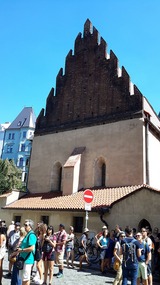
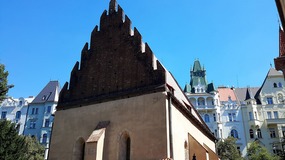
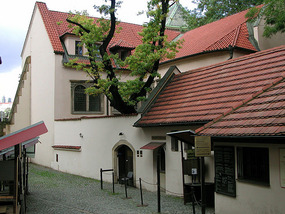
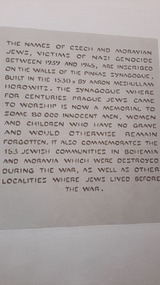












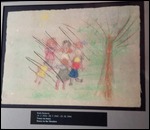

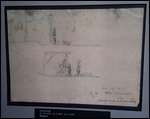



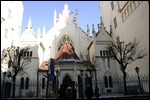




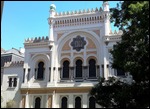







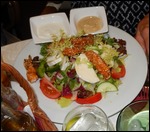

Kate
2016-09-05
What a moving day! You both must have needed some TLC after those experiences.
barbarabarry
2016-09-11
I am so moved by your photos and stories. What an amazing trip you're having (tho you always have amazing trips!) ... I'm so glad for Bill that he found a cousin!